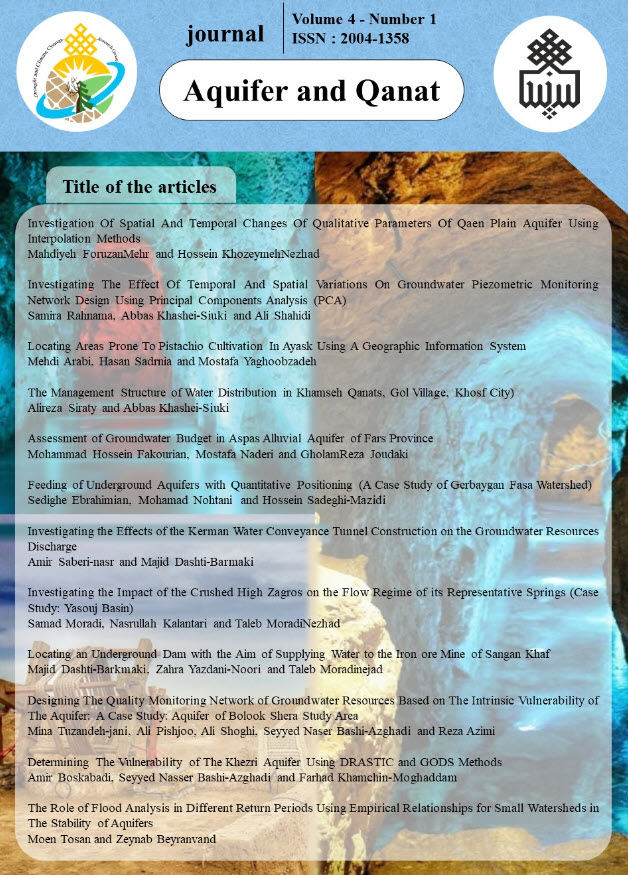Document Type : Original Article
Authors
1 PhD Graduate of Shahid Chamran University of Ahvaz and Expert of Regional Water Company of Fars, Shiraz, Iran.
2 Professor, Department of Geology, Faculty of Earth Sciences, Shahid Chamran University of Ahvaz, Ahvaz, Iran.
3 PhD Student, Department of Geology, Faculty of Earth Sciences, Shahid Chamran University of Ahvaz, Ahvaz, Iran.
Abstract
The researched area is located around the city of Yasouj and is part of the Karun Bozorg basin. The main purpose of this study is to investigate the dominant structural characteristics and their effect on the discharge of springs and the control of underground water flow in their reservoir rocks. In this research, by using remote sensing data, GIS, ground observation data of water resources and analysis of discharge data using their recession curve, the relationship between structural factors on the frequency and discharge regime of representative springs was investigated. In the first step, a lineament map was prepared from satellite images and geological maps, and then the dependence of the location of the springs and their discharge regime with these structures was analyzed. The results showed that the occurrence of structural phenomena such as folds, faults, joints and fractures on the one hand and appropriate precipitation on the other hand, have created suitable conditions for the development of karst aquifers. The emergence of springs along the faults also shows the importance of the structural role in the region. These faults control the main directions of water flow in the karst basin, whereas the joints and fractures related to them play a role in the secondary directions of the flow. The analysis of fractures ishowed that the average opening of more than 20 mm and the slope of the bedding plane of about 50 degrees has facilitated the penetration and transfer of water in the catchment area of the springs
Keywords
Main Subjects

